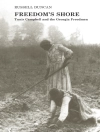On Monday 19 September 1803, the most significant trial in the history of Ireland took place in Dublin. At the dock stood a twenty-five year old former Trinity College student and doctor’s son. His name was Robert Emmet and he was standing trial for heading a rebellion on 23 July 1803. The iconic power of Robert Emmet in Irish history cannot be overstated. Emmet looms large in narratives of the past, yet the rebellion, which he led, remains to be fully contextualised. Patterson’s book repairs this omission and explains the complex process of politicisation and revolutionary activity extending into the 1800s. He details the radicalisation of the grass roots, their para-militarism and engagement in secret societies. Drawing on an intriguing range of sources, Patterson offers a comprehensive insight into a relatively neglected period of history. This work is of particular significance to undergraduate and post-graduate students and lecturers of Irish history.
विषयसूची
Acknowledgements Introduction Part I: Antrim and Down Antrim and Down: an introduction The first wave, November 1798-June 1799 The second wave: active resistance Part II: South Munster, Galway, and Mayo South Munster Galway and Mayo Part III: South Leinster South Leinster Joseph Cody and James Corcoran Conclusion Bibliography Index
लेखक के बारे में
James G. Patterson is an Associate Professor of History at Centenary College of New Jersey












